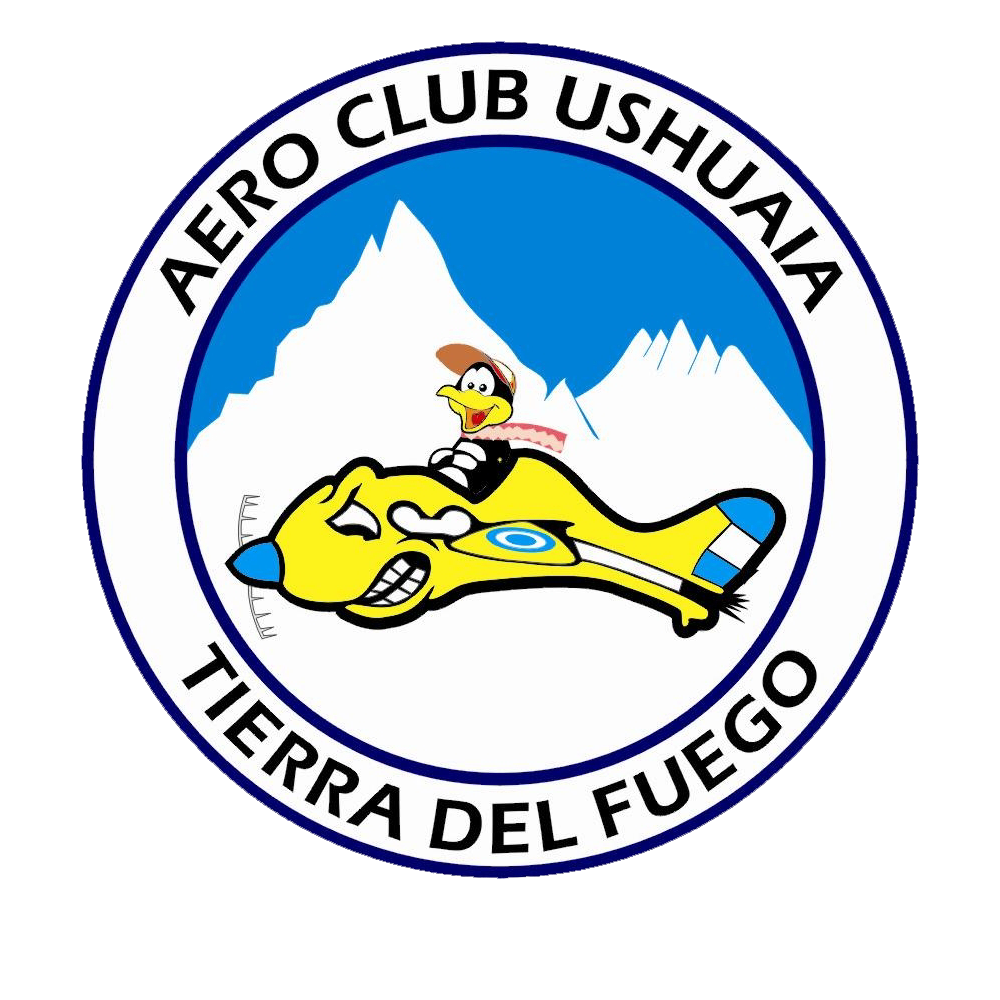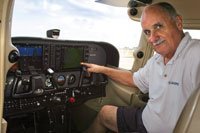A first solo flight of a student pilot is an important experience for Flight Instructors (IV), mainly because it means an indelible qualifying mark in their jobs.
Perhaps in no other instructional situation is so much at stake in the outcome. Once the instructor is out of the plane, there is not much he can do, so the IV (Flight Instructor) must be sure that the student is ready.
To be sure, it’s a nervous time for everyone involved. I sweat both the first circuit of the field and the student, even though I know he can perform the task. How do I know? Because he has been doing it, consistently and without my intervention. That doesn’t mean they won’t get tense and attack the runway, but if they have been consistently making acceptable landings, they should be able to continue to do well.
The still inexperienced IV’s that I have instructed will ask, “but how do I know when they are ready”, they say “every time I think they are ready, I change my mind”, this hesitation may be the maternal instinct that all instructors have and it is not an easy thing to overcome. I always advise these apprehensive people with the same words; “when you have nothing else to do, you’d better get off”.
In the same vein, that’s the answer I give to students who ask, “How many hours do I need before I fly solo?” I explain that hours are not important, efficiency is what counts. When the student makes all the correct moves, without my intervention, I can get off.
For some this will mean 12 or 15 hours? for others it may be 20 or more. The time elapsed before flying alone seems to have little effect on the hours accumulated, in order to obtain the license.
To confirm that the student has achieved the required level of proficiency, I stifle my normal verbiage and assume a quieter demeanor in the case. I want to be sure I’m training them, knowing what they’re doing on every takeoff and landing, so I shut up and watch.
If the student takes the lead in a pinch situation or prevents it from happening in the first place we are on our way to getting out of the right seat. Sometimes I need to remind young IVs that the efficiency of solo flying is not the same as that of the private pilot. We can expect students flying only to alter their speed by 5 knots from time to time – something we would not accept if it were the case for a final check. With only 12 hours or so of flight time, advanced accuracy cannot be expected.
What must be demonstrated is awareness of the inaccuracy and how to correct it. If the student realizes that he has gained an extra 5 knots of speed during the turn to final, does he raise the nose a little higher in an effort to correct the condition?
If you do, he will eventually improve without an instructor. Early in my career I learned that a “GoAround” is not a sign of incompetence. Rather, a well-executed refusal initiated without prompting demonstrates that the student has learned to take command, avoid an uncomfortable situation and try again.
I also need to see a consistent result on the basis of the landing pattern. Despite the vagaries of wind, traffic and turbulence, the aircraft should arrive on the first third of the runway, stable and at speed, with no last minute throttle applications or steep descents to the runway. Once I see the consistency, I know it won’t be long before I can see the landing from below.
SCHEDULE THE FLIGHT
We never scheduled a day for the flight alone. I am never absolutely sure about releasing a student during the next lesson, even though I think they are ready. We all have bad days, when things don’t work out. If it is assumed in advance that the flight alone will occur, there may be performance pressure. It is better to postpone it and let the student mature a little. We also did not invite family members to watch the big event. We do not need further distraction from a set of observers. I also don’t want a local pilot to visit me while I’m on the runway, so I often take the plane to a place where it’s mostly out of sight. This is a private party: Record the video on the second flight only, not on the first flight.
If I think it might be the day to release the student, I want to see three good landings in a row. I will not deliver any advice or gentle nudges at the controls during these field circuits, but will observe the scenario and check traffic in an obvious manner, just to see if the student can handle a distraction. We will perform a full stop landing so that we can critique the performance during the new taxi.
Distractors will include uncertain weather, including unfavorable winds. We do not need the pressure of lowering clouds or increased buoyancy before touchdown at a time when the student is filled with fear and worry. There should also be plenty of natural light and fuel left over, in case a GoAround set comes to demand the reserve.
Remembering my own advice I ask myself one last time, “Am I fulfilling a mission by being here?”, actually at some point, the presence of an instructor becomes counterproductive. After excessive dual control students can become too dependent on the IV, expecting to be told when, where and how to fly each segment of a maneuver. This is not the way to create a pilot in command. As long as the student is demonstrating safe skills, leaving the student alone encourages growth. Casually with just a few words of reassurance I ask the student to turn the runway and stop. I say, “You can do this just as efficiently without me. Do exactly what you have been doing. I’ll be here waiting for you” as I say this, I am undoing my seat belts and walking down the door. Unless I feel nails digging into my shirt or hear moans “Please, sir, I don’t want to go.” , I walk away without looking back.
ALONE AT LAST
The idea is to keep the student practicing the same thing repetitively. Roll to the end of the runway, perform a pre-takeoff check and announce that you are ready. I can usually predict the outcome by observing the takeoff.
A hint of nervousness indicated by unstable wings or a PIO (pilot induced oscillation), is my cue to pay close attention to the first approach and landing, which may be faulty and performed by sweaty palms.
My normal location is next to the taxiway, where I can send signals to the trainee on his return, with a clear view of the proceedings. I want to be visible when he passes during takeoff, so that he knows he has not been abandoned, but I will not make signals that could be misinterpreted. And I’ll be there, eyes fixed on the climb, the bank, the descent and anticipating every move in the cockpit. In a couple of minutes the visible dot in the air will grow when it appears at the end, and we will know, by the way, that we have trained a pilot. Regardless of the nervous state, the flare and grounding should be as before, and we will be ready to express words of pleasure and encouragement: “See, you can do it better without me being here. Do it again and see if you can do better. Cut the power a little earlier.
Although I don’t usually keep a hand-held transmitter on my belt (I was an instructor for 20 years before they became commonplace), they can be handy in a critical situation. I really think it’s better to be within range of a radio, even if it’s an airplane on the load line, in case the student starts a series of questions and needs a little calm. I have also had complicated wind or traffic rotations that require communication with the student. However, if the instructor feels that he/she needs to talk to the student during the event, the solo flight should not be performed.
Traditionally, three circuits will be made on the first solo flight. During the conversation before the final circuit, I will ask the student to take the aircraft back to the hangar, unless it is too far away and I need to walk or get a ride? This helps to consolidate the pilot-in-command feeling. Will I stand by while he or she completes the engine cut? it is not necessary to leave the magnets warm because of our enthusiasm to celebrate. As the IV, I am the first to greet and congratulate, and then, we will do the post-briefing.
CELEBRATION
I don’t really like to mess up my clothes or dampen my hair after a flight alone. The event should be marked with both drink and pride and solemnity? is only the first step on a long stairway to heaven.
The flight alone is a valuable confidence builder, it is proof positive that this individual is a pilot and no longer a trainee. It also accelerates instruction. As I explain to the student, “You can accomplish twice as much in an hour of practice if I’m not in the plane. The IVs only interrupt your thoughts when you perform a maneuver. By being totally focused on the task you can progress much faster, as long as you know what you are doing.”
After the momentous first solo flight, I normally schedule an hour of intense dual control in the practice area, designing a program of solo flight activity to be practiced if the weather is good, the next time. We have spent so much time on the traffic pattern that led to solo flight that we need to take a break from the bumps and grinds and get back to polishing the fundamentals.
The flight instruction tasks are now shared with the student, who is now practicing alone, and the IV who is supervising him and occasionally flying alongside him. There are many new maneuvers to incorporate as we continue along the route to the final checkup, but one never forgets one’s first trips in the “pattern”. It’s a great day for both of us!
For the IV LEROY COOK

